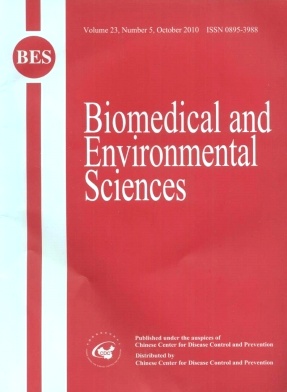Calcium Overload Is A Critical Step in Programmed Necrosis of ARPE-19 Cells Induced by High-Concentration H2O2
-
Key words:
- Apoptosis /
- ARPE-19 cell /
- Necrosis /
- Oxidative-stressed injury /
- Hydrogen peroxide
Abstract: Objective Oxidative stress plays an important role in retinal pigmental epithelium (RPE) death during aging and the development of age-related macular degeneration.Although early reports indicate that reactive oxygen species (ROS) including H2O2 can trigger apoptosis at lower concentrations and necrosis at higher concentrations,the exact molecular mechanism of RPE death is still unclear.The purpose of this study was to investigate the molecular pathways involved in RPE death induced by exogenous ROS,especially at higher concentrations. Methods Cultured ARPE-19 cells were treated with H2O2 at different concentrations and cell viability was measured with the MTT assay.Cell death was morphologically studied by microscopy using APOPercentage assay and PI staining.Furthermore,the impact of oxidative stress on ARPE-19 cells was assessed by HO-1 and PARP-1 Western blotting and by the protection of antioxidant EGCG.Calcium influx was determined using the fura-2 calcium indicator and the role of intracellular calcium overload in ARPE-19 cell death was evaluated following cobalt treatment to block calcium effects. Results H2O2 reduced the viability of ARPE-19 cells in a concentration-dependent manner,which was presented as a typical s-shaped curve.Cell death caused by high concentrations of H2O2 was confirmed to be programmed necrosis.Morphologically,dying ARPE-19 cells were extremely swollen and lost the integrity of their plasma membrane,positively detected with APOPercentage assay and PI staining.24-hour treatment with 500 μmol/L H2O2 induced remarkable up-regulation of HO-1 and PARP-1 in ARPE-19 cells.Moreover,antioxidant treatment using EGCG effectively protected cells from H2O2-induced injury,increasing cell viability from 14.17%±2.31% to 85.77%±4.58%.After H2O2 treatment,intracellular calcium levels were highly elevated with a maximum concentration of 1200nM.Significantly,the calcium channel inhibitor cobalt was able to blunt this calcium influx and blocked the necrotic pathway,rescuing the ARPE-19 cell from H2O2-induced death. Conclusions At high concentrations,H2O2 induces ARPE-19 cell death through a regulated necrotic pathway with calcium overload as a critical step in the cell death program.
| Citation: | GUANG-YU LI, BIN FAN, YONG-CHEN ZHENG. Calcium Overload Is A Critical Step in Programmed Necrosis of ARPE-19 Cells Induced by High-Concentration H2O2[J]. Biomedical and Environmental Sciences, 2010, 23(5): 371-377. |







 Quick Links
Quick Links
 DownLoad:
DownLoad: